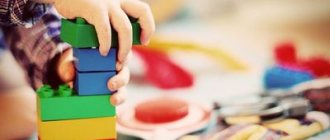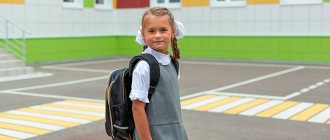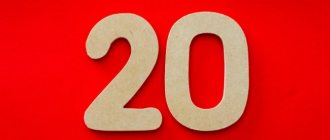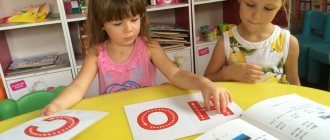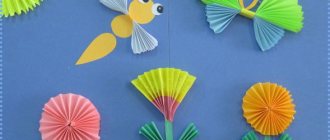Assignments for first-graders in mathematics:
Mathematical tasks can be not only educational, but also bright and varied. These math exercises will help your children master the basic math skills needed for 1st grade. They are presented in a playful way, which promotes exciting learning for first-graders. In this non-boring form of learning, children will learn simple mathematical operations and understand that mathematics can be very interesting.
trace and color the pictures
Give your first grader a task: create a dotted line drawing and then color it. The complex also offers templates for writing out various figures.
find 2 identical pictures
The task “Find two identical pictures” is a way to develop attention and perseverance. The essence of the exercise is that among 6-8 very similar pictures, the child should identify two that are absolutely identical. It is worth explaining to the child how to perform the test: sequentially compare each picture, notice small details and identify two that are identical in all respects.
solve the examples and put the signs: >, <, =
In this section you will find a dozen useful examples with colorful illustrations and coloring pages that will help first-graders master equation solving skills.
come up with a problem statement and solve it: addition
Writing simple math problems helps first-graders develop language and abstract thinking. With the help of a teacher or parents, the child learns to identify such components of a task as the condition, the question posed, the solution and the preparation of an answer to it.
come up with a problem statement and solve it: subtraction
It is convenient to compose the skills of composing subtraction problems using ready-made cards with answers for control. It is easy for a child to understand the essence of the picture and solve the problem.
repeat the drawing dot by dot
Fine motor skills of still clumsy children's fingers need constant training. In addition, motor skills largely influence the development of the brain, especially the center responsible for speech and thinking. Suitable exercises for developing these skills are copying a drawing according to the proposed template.
connect the figures
Tasks on creating figures according to a given algorithm are intended to develop figurative and logical thinking in a child. At first, offer the first grader simpler options, gradually complicating the task.
solve a logical thinking problem
These are simple logic problems, the solution of which involves drawing arrows. For example, using arrows you need to connect interconnected objects (an animal and its house, an example and an answer to it), restore the order of numbers, or divide objects into groups.
Draw arrows from 1 to 10.
Match the example with the correct answer.
Educational quiz for the younger group
Beyond time, basic questions remain, the answers to which children know based on daily communication with peers and parents.
- What do you call a child who is smart beyond his years? (Prodigy)
- What is between night and day? (Morning)
- What color are the first flowers after winter? (White)
- What does frost paint on the windows? (Patterns)
- Jewelry for fingers is... (rings)
- What do they twist around the waist during sports activities? (Hoop, hula hoop)
- Who heals people? (Doctor)
- Who does dental treatment? (Dentist)
- How, besides money, can you pay for purchases? (Bank card)
- Where can I withdraw money from my card? (At the ATM)
- What is the name of the online world of computer games? (Virtual)
- What is the main attribute in football? (Ball)
- When do children go to school? (September 1)
- How many numbers are there in total? (10)
- Where do they perform in performances and concerts? (On the stage)
Writing assignments 1st grade:
Writing assignments are very important for elementary school students. With the help of printed simulators, students learn letters, acquire writing and literacy skills. And thanks to beautifully designed assignments, learning is fun and interesting.
tick sticks: templates for children 6 7 years old
The proposed copybooks with different sticks, hooks and other elements of letters and numbers will help first-graders acquire calligraphic writing skills, and then develop beautiful and legible handwriting. And additional coloring drawings and tracings will make this process more fun.
read divide the words into syllables
One of the basic skills of a first grader is the ability to correctly divide words into syllables. To begin, offer your child cards with the rules for dividing words into syllables, and then consolidate the acquired knowledge using a simulator with tasks.
learning to hatch: templates for children 6 7 years old
To prepare your hand for writing, learn to think logically and analyze, offer your child the following patterns for shading.
Riddles for the development of thinking of 5-6 year olds
The purpose of riddles is not just to formulate questions on a certain topic, but also to have fun. We have selected the top 15 interesting tasks for kids that can test their general knowledge.
- Jumps through the trees and hides nuts. (Squirrel)
- A faithful friend for a person, will become a running companion. (Dog)
- A fluffy ball, a ball of wool. Drinks milk and purrs easily. (Cat)
- The nose is a snout and the tail is a hook. (Pig)
- Butts and jumps, hides a lot of fur. (Goat)
- I am stubborn, small, related to any horse. (Donkey)
- It takes five hours for me to crawl a step. (Turtle)
- Throw in meat, onions, potatoes. Eat the pan, not the spoon. (Soup)
- Striped, scarlet, everyone loves me very much. (Watermelon)
- Not an easy neighbor, but a real mother hen. (Chicken)
- A beep will notify everyone when there is boiling water. (Kettle)
- A stick with a thread and a hook, with it you will be a fisherman. (Fishing rod)
- It drives and buzzes, in a hurry to take everyone home. (Car)
- Let's go on a trip and put at least a bear there. Small and large, they store expensive things. (Suitcases)
- We put the earhooks on the small ears. (Glasses)
Learning to write letters print:
templates for children 6 7 years old
The best way to start learning penmanship is with the help of special simulators. Using examples, the child learns to write letters, his first syllables and short words.
Preparing for school - educational games for children
Looking for games to prepare your child for school? In the “Comprehensive program of activities for preparing for school” section, we have collected a large number of various educational games for preparing for school, dividing them into lessons for convenience. Each lesson includes tasks for: development of thinking, development of attention, development of memory, learning to count.
Our entertaining lessons will help parents and teachers prepare their children for school in a playful way.
Before starting the next lesson, familiarize yourself with it. Try to assess the degree of difficulty of the tasks. Explain the conditions in your own words, ask questions to make sure your child understands them. If there are difficulties, ask leading questions that encourage the child to think independently, do not give ready-made answers. Together with your little student, rejoice at the solution you have found.
Preparation for school. Part 1.
As a rule, teachers and parents believe that in order to prepare a preschooler for school and develop school skills, it is necessary and sufficient to teach him to read syllables, count, and also develop fine motor skills, thereby preparing his hand for writing. In fact, in order for a child to successfully master the school curriculum, he, first of all, needs to develop the intellect as a whole: perception, memory, attention, thinking, imagination, speech. The best way to do this is in the game. The educational games we offer for activities with children will help you objectively assess the level of intellectual development of your child and independently organize the preparation of your preschooler for school. The most important thing is to understand that preparing for school is a long and creative process, in which there is no place for drills, cramming and boring conversations. Preparation for school must begin in advance and be carried out regularly, individually for each child, because each child has his own developmental characteristics. Go to the lessons of the first part
Preparation for school. Part 2
The second part of our online program of classes for preparing for school expands and complements the topics of the first part. The tasks in this section are aimed at developing skills and abilities to solve complex problems of analysis, synthesis and classification, and working with sets. Much attention is paid to the development of school skills, for example, the ability to work according to rules. This is due to the fact that recently the requirements for future first-graders have increased significantly. In addition, today almost every elementary school practices teaching using one or another alternative development method. This means that you cannot do without special preparation of children for school. Agree that your child needs a high level of intellectual development not only for studying in the first grade, it increases his competitive advantages for life, and our tasks are ultimately aimed at this. Go to the lessons of the second part
Preparation for school. Entertaining lessons on the computer
The section contains 75 entertaining computer tasks divided into 25 lessons, all tasks are designed for children of senior preschool age. When developing the tasks in this section, the methodological recommendations of the State Scientific and Methodological Center of the Ministry of Education of the Russian Federation were taken into account. Lessons on the computer are held in a fun, playful way. Each lesson includes tasks for the development of logical and mathematical abilities and learning to count, as well as a task for learning to read. Computer lessons develop attention, memory, school skills and thinking (logical, spatial, visual-figurative). Go to fun lessons
The task is to circle the numbers:
templates for children 6 7 years old
Copybooks and coloring pages will help future schoolchildren quickly master the skills of writing numbers.
The task is to count to 10
Simple exercises will help you strengthen your ability to count up to 10.
Count and write down
Once first graders have learned their numbers, it's time to begin mastering skills like addition and subtraction. Bright cards with beautiful designs are perfect for this.
Coloring pages for children with tasks
Shade each segment of the drawing in accordance with the indicated numbers, and then color it.
Color the picture by numbers.
Solve the examples and color the picture according to the meanings of the numbers.
Consider what color each letter represents and color the picture. Guess which character is hidden on it.
Draw an outline and color the picture.
New Year's quiz for five-year-old children
Fun questions for kids at New Year's Eve - great fun for the whole family. Here are 15 questions you can use to reinforce winter fun knowledge.
- A famous Russian folk tale, the name of which has 3 letters “o”. Name it. (Morozko)
- The funniest and favorite fun for children in the yard in winter is ... (snowballs; snowman)
- Winter transport with two poles is... (skis)
- Who is the main culprit behind the winter holidays? (Father Frost)
- When does the New Year start? (1st of January)
- Who is the granddaughter of Santa Claus? (Snow Maiden)
- How does Santa Claus get from the kingdom of the constellations to the house? (Through the fireplace)
- What can be used for a snowman's nose? (Carrot)
- After what does winter come? (After autumn)
- What are the names of Christmas songs for children and adults? (Carols)
- What birds fly south for the winter? (Migratory)
- What all-Russian clock tells everyone that the New Year is approaching? (Chimes)
- There are no roots and no wings, but it flies perfectly in winter. What is this? (Snowball)
- Name the month with which winter begins but the year ends? (December)
- Where did the Christmas tree live and was born? (In the forest)
